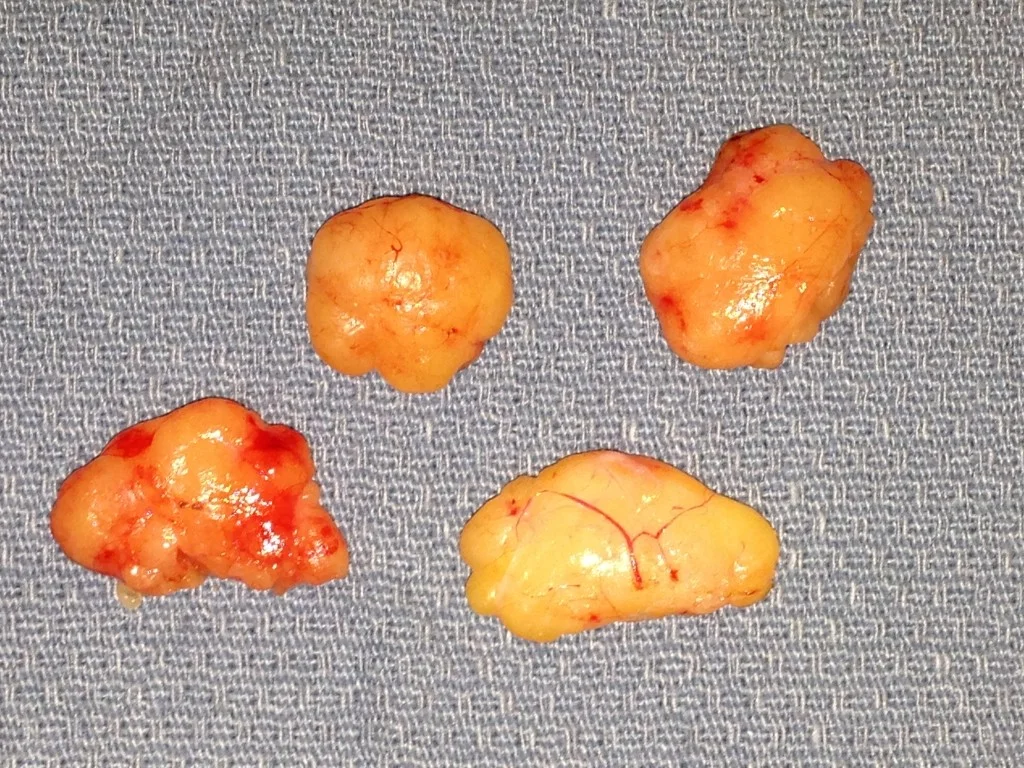Have you been told by your primary care doctor that you either have or most probably have a lipoma? Or, have you or someone else conjectured that the somewhat doughy lump that you have might be a lipoma?
If the answer is yes, should you be very concerned about it?
In an earlier post, About Lipomas, I explained that it is a fatty tumor (firm mass of fat) which is absolutely benign. That is, it is not a cancer and has essentially no risk of degenerating into one.
These growths, which are quite common, usually arise from the fatty layer of the skin. Though they can appear in most any area of the body where there is fat, they most frequently arise in the arms, legs, back, abdomen, neck and forehead. On occasion, they can be confused with other masses such as a sebaceous cyst or a bony growth (when they are situated on the bone such as on the forehead), but their appearance and characteristics are generally quite distinctive.
If you have a lipoma, should it be removed?
As this is a benign lump of fat which poses no health risk whatsoever, its presence alone does not warrant its removal. But, this doesn’t mean that it shouldn’t be removed.
What are good indications to have a lipoma removed?
The common reasons for surgical removal of a lipoma are aesthetic and symptomatic. A noticeable lump causing the skin to protrude can be bothersome to look at. Multiple ones or a very large one compound this problem. And, if there is a large one on your forehead, in plain view of the world, well… You know what your decision must be!
Sometimes, it is in a location that causes it to be symptomatic and problematic particularly if it is subjected to pressure or repeated trauma. For example, a very large lipoma of the back can cause discomfort when you lay down on your back such as in bed or lean back in a chair. Similar issues arise when they are in the legs and arms. Lipomas of the neck and thighs can become so large that they make it very difficult to fit into certain shirts and jeans.
Depending on the size, location, number, your age, anxiety level, etc., surgery can be performed either under local anesthesia, sedation (twilight anesthesia) or general anesthesia. The best approach for you would be determined at the time of your consultation.
For more questions regarding lipomas or for any plastic surgery procedure that I perform or to schedule your consultation, please call my office at 480-451-3000.
Steven H. Turkeltaub, M.D. P.C.
Scottsdale and Phoenix, Arizona

